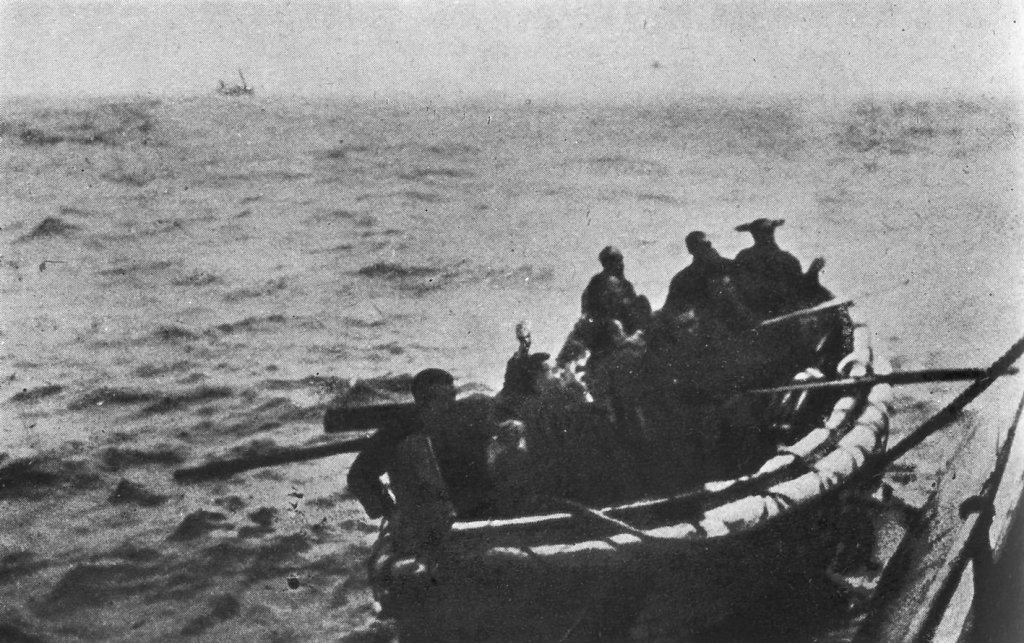Charles William Rymer was born on 1 April 1894, in Buffalo, West Virginia. His mother is Sarah L. (McCombs) Rymer. In 1915 Charles W. Rymer was employed as a machinist in Marion, Ohio.

Charles W. Rymer entered service at the United States Naval Recruiting Station, Parkersburg, West Virginia, on 12 November 1917. Rymer was assigned to Receiving Ship, Norfolk Virginia to 16 February 1918. On 3 April 1918, he was reassigned to Naval Hospital, Norfolk Virginia. On 22 April 1918 he was sent back to Receiving Ship, Norfolk Virginia. He was then Assigned to duty aboard the USS Ticonderoga III (ID 1958) until 30 September 1918. Rymer had attained the rank of Fireman First Class (F1C).
F1C Charles H. Rymer lost his life while serving aboard the USS Ticonderoga III (ID 1958), on 30 September 1918.
USS Ticonderoga (ID 1958)
From: https://www.history.navy.mil/content/history/museums/nmusn/explore/photography/wwi/wwi-u-boat-engagements/atlantic.html
On September 30, 1918, U-152 sank USS Ticonderoga on her way to France. Seriously wounded early in battle, Lieutenant Commander James J. Madison, USN, Ticonderoga’s Commanding Officer, remained on the bridge and continued to fight the ship until she had to be abandoned. Though incapacitated by the loss of blood, he survived four days in a lifeboat. For his “exceptionally heroic service” during this action, Lieutenant Commander Madison was awarded the Medal of Honor. Only twenty-four men survived the battle. The loss was the greatest combat loss of life on any U.S. Navy ship during the war.
The remains of F1C Charles W. Rymer were not recovered. The memory of F1C Charles W. Rymer is memorialized on the Tablets of the Missing, Suresnes American Cemetery and Memorial Suresnes, Département des Hauts-de-Seine, Île-de-France, France.
Charles W. Rymer is also remembered on the Honor Roll, at the Veterans Memorial Park, in Marion, Ohio; and on the World War One Honor Roll, located on the second floor of the Marion County Courthouse.
More on the USS Ticonderoga:
Ticonderoga loaded another Army cargo at Norfolk between 5 and 19 September. She then steamed to New York where she joined a convoy bound for Europe. On 22 September, Ticonderoga cleared New York for the last time. During the night of the 29th and 30th, the transport developed engine trouble and dropped behind the convoy. At 0520 the following morning, she sighted the German submarine U-152 running on the surface; and she cleared for action. For the next two hours, her gun crews fought the enemy in a losing battle. The U-boat’s gunners put her forward gun out of commission after six shots, but the 6-inch gun aft continued the uneven battle. Almost every man on board Ticonderoga-including her captain-suffered wounds. Eventually, the submarine’s two 5.9-inch guns succeeded in silencing Ticonderoga’s remaining gun. At 0745, Ticonderoga slipped beneath the sea. Of the 237 sailors and soldiers embarked, only 24 survived. Twenty-two of those survivors were in one life boat and were picked up by the British steamer SS Moorish Prince four days later. The other two, the executive officer and the first assistant engineer, were taken prisoner on board the U-boat and eventually landed at Kiel, Germany, when U-152 completed her cruise.
Naval History and Heritage Command


U-152 takes on survivors as Prisoners of War